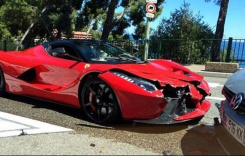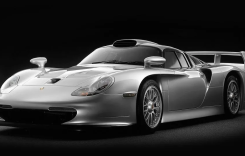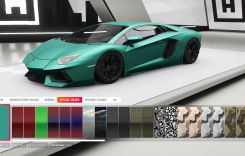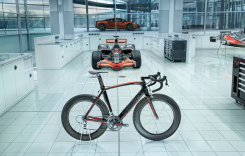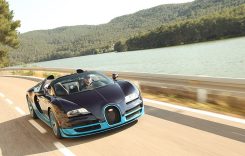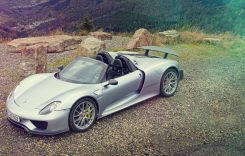
(Top) The Monster benefits from a bright LED headlight that puts out deeper spread of light during rides after dark. (Center) The Monster 821 employs a water-cooled L-Twin engine that pumps out nearly 97 horsepower at the rear Pirelli tire. (Below) Ducati offers an array of electronics including adjustable engine maps, ABS and traction control. While we appreciate those features we wish the menu system’s interface was an easier to use (think smartphone).
Ducati’s Monster appeals to riders with an attitude. This all-new 821 version ($11,495) aims to up the ante with a more powerful, and now liquid-cooled, 821cc L-Twin. Sporting an array of electronics including traction control, adjustable engine power modes and ABS, the new Monster targets more advanced thrill-seeking riders with an Italian twist.
When it comes to looking good naked, Ducati knows how to flaunt its stuff. But in our mind the ’15 Monster has taken a step backward visually. The biggest eye sore is the extensive use of plastic, perhaps added to help hide its new cooling plumbing. We do, however, appreciate its always smiling front end with ultra-bright LED-headlight and exposed forward portion of its trellis frame.
Physically the Monster commands the largest chunk of real estate. It has the longest wheelbase and feels the widest through the mid-section at the fuel tank (which also offers the largest capacity at 4.6-gallons), though the Monster’s narrow seat junction is on par with the skinny Yamaha. One big strike against rider comfort, however, is the right leg’s proximity with the side of the exhaust pipes (fortunately they are covered). The Ducati weighs the most, too, measuring 55 pounds more than the FZ-07 and eight over the aging Suzuki.
“It feels long, the bars feel wide and the cockpit didn’t lock you in the seat,” Abbott explains. “The controls – everything just felt spread out. Kind of like the bike was maybe too big for me. It was probably my least favorite of all of them.”
On the road we were generally pleased with the Ducati’s handling. True, its chassis isn’t nearly as balanced as the tried-and-true SFV with the suspension feeling a little bouncy through the fast stuff, but it could be ridden harder through corners than the chatter prone front end of the Yamaha. Another handling advantage for the Monster is its higher-spec Pirelli Diablo Rosso II tires than the older Dunlop Qualifiers of the Suzuki or the more budget-oriented Michelin Road 3s on the FZ.
“It’s a little longer and a little lazier – but it had good security and grip throughout the corners,” notes AC. “Part of it has to do with the tires that come on with it.”
“The straight-line stability was great but you get into the corner and it kind of feels a little bit lazy,” admits Jason.
A clean and legible LCD keeps tabs on engine vitals. While ripe with features including air temperature, and instant/average fuel economy it’s missing a fuel gauge (also missing on the SFV, but included on the FZ) and handy gear position indicator.
Where the Ducati adds value is in the electronics department. Within the display, the rider can select between three engine power mode/throttle response maps (Sport, Touring, and Rain), three ABS and eight traction control settings. Both ABS and TC functions can be disabled, too. The only complaint with the system is its tedious menu navigation, as the user has to push and hold a series of handlebar-mounted buttons to save settings, before exiting the menu and riding.
(Left) The Ducati’s chassis wasn’t nearly as well-balanced as the trusty Suzuki. It was however more adept through turns than Yamaha’s FZ-07. (Center) Although it wasn’t our favorite engine, there’s no denying the performance Ducati’s L-Twin engine serves up. (Right) Compared to the ultra-maneuverable Yamaha and Suzuki, the Ducati felt a little long and took a bit more effort to hustle around turns.
Overall we preferred the ‘Touring’ engine map, as it gives full access to the Monster’s 96 horsepower (a whopping 27 more than the SFV and 31 hp advantage over the Yamaha), but with a smoother, more linear throttle response. The mapping certainly isn’t perfect, however, with the throttle feeling more jumpy and overly sensitive-feeling than the super smooth Twins from Japan. Considering the 821’s extra lung capacity, it isn’t a surprise that it sucks down more fuel and achieved the lowest fuel mileage (41.4 mpg). But factor in the extra fuel payload and the Monster gave us the longest range between fill-ups at 190 miles.
Monster 821 Settings
Drivetrain
Power Mode: Touring
DTC: ‘Off’
ABS: 1
Ducati’s TC generally works well on the 821, providing an extra level of security during apex staffing missions. However, the electronics might get in the way for more advanced riders, like Colton, who claims: “To be honest I liked riding the bike with the electronics left ‘off’ as they get in the way of the fun. Though for mellow rides, or for when riding in wet weather or sketchy roads they might work well there.”
While Colton was less than enthused with Ducati’s ‘Safety Pack’, there’s no denying the function of its ABS programing. Results of the braking test demonstrate the effectiveness of the electronics with the Monster stopping 5.3 feet earlier than with ABS disabled. Its higher-spec Brembo radial-mount hardware was also more effective than the budget setups on the Japanese bikes, allowing the Ducati to stop from 60 to 0 mph in 115 feet more than 25 feet better than the competition (Yamaha 140.4, Suzuki 143.7).
(Top) While we enjoy riding the Ducati it’s a little too expensive considering the performance and average overall riding dynamic. (Center) Ducati lures riders with its array of electronics and new water-cooled L-Twin with its Monster 821. (Bottom) Overall we preferred the ‘Touring’ map as it gives full access to engine power but with a smoother, less sensitive mapping making the Monster easier to ride. Even still, its throttle response is nowhere near as smooth as the Japanese bikes.
The Monster’s L-Twin reigns as torque king, producing nearly 60 lb-ft peak at 7700 rpm. Yet it didn’t feel as snappy as the Yamaha’s Parallel Twin at lower revs, despite what the torque graph demonstrates. Although it has the loudest exhaust note, the Ducati’s tune didn’t excite us as much as Yamaha.
“It does have the most grunt and power in the mid-range and up top,” says pro wheelie popper AC. “Even though it was lacking a little off the bottom. Once it was opened up [revving at high rpm] it could stretch its legs a little bit.”
“Once it got to the top it really shined,” agrees Abbott on the Monster’s peaky powerband. “The bad thing is it took a little while to get there. It was real slow off the bottom.”
Acceleration testing proves the might of Ducati’s powertrain, recording the quickest 0-60 time (3.6 seconds) as well as the fastest gallop through the quarter-mile (11.5 seconds @ 120.5 mph). We generally enjoyed the feel and action of the Ducati’s clutch but its six-speed gearbox isn’t as precise between shifts compared to the Japanese bikes, hence the low score in the Drivetrain category.
When it comes to sheer performance, Ducati again delivers with its sledgehammer of an engine helping capture top scores in six of 10 performance categories. While it’s got plenty of muscle, the Monster is missing the comfort and overall motor refinement of the competition. Factor in its hefty price tag, that’s thousands more than its rivals, and the 821 ranks in the runner-up spot.
Ducati Monster 821 Highs & Lows
Highs
- Fast and powerful engine
- Capable brake hardware and ABS
- Variety of electronics and rider aids
Lows
- Costs thousands more than the competition
- Weighs the most

